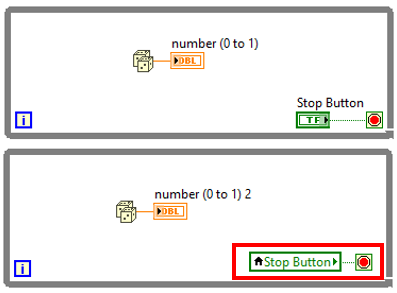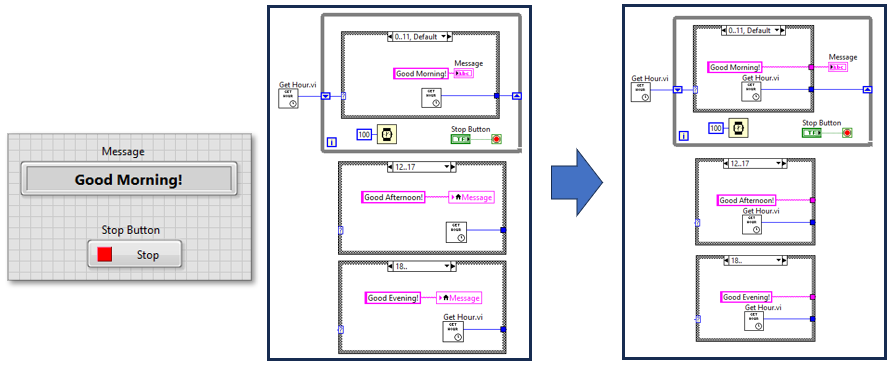Local Variable: Difference between revisions
m Layout fixes. |
No edit summary |
||
| Line 1: | Line 1: | ||
{{LabVIEW Palette Object Information|palette=Functions Palette/Programming/Structures{{!}}Structures palette|type=function|icon=Functions Palette - Programming - Structures - Local Variable.png}} | {{LabVIEW Palette Object Information|palette=Functions Palette/Programming/Structures{{!}}Structures palette|type=function|icon=Functions Palette - Programming - Structures - Local Variable.png}} | ||
Latest revision as of 22:12, 5 August 2023
| Object information | |
|---|---|
| Owning palette(s) | Structures palette |
| Type | Function |
| Requires | Basic Development Environment |
| Icon | |
Use Local Variables to read or write to one of the Controls or Indicators on the Front Panel of a VI.
Usage
Stopping both parallel loops using the same Stop Button.
It is necessary to change Stop Button Control mechanical action from Latch... to Switch...
Best practice
Using Local Variables breaks data flow execution. It is useful when it is not possible to pass data through wires, like parallel processes. In this case, the use of Local variables can be a solution. However, you should be careful when using this resource because it can generate unexpected behavior when you write values in multiple places in your code. A good rule to follow when you use Local Variable is: One Write, Multiple Reads.
Example of avoiding Local Variables: If you have a State Machine design pattern and lots of Local Variables being read and written through the Cases is: Change local variables instances for a wire using a Shift Register to update the value when is necessary. See the picture below:
History
| |
History information is needed. What changes have occurred over previous versions? |
| Version | Change(s) |
|---|---|

|
More info to come. |
See Also
External Links
| |
Add links to external resources that would also help. |


